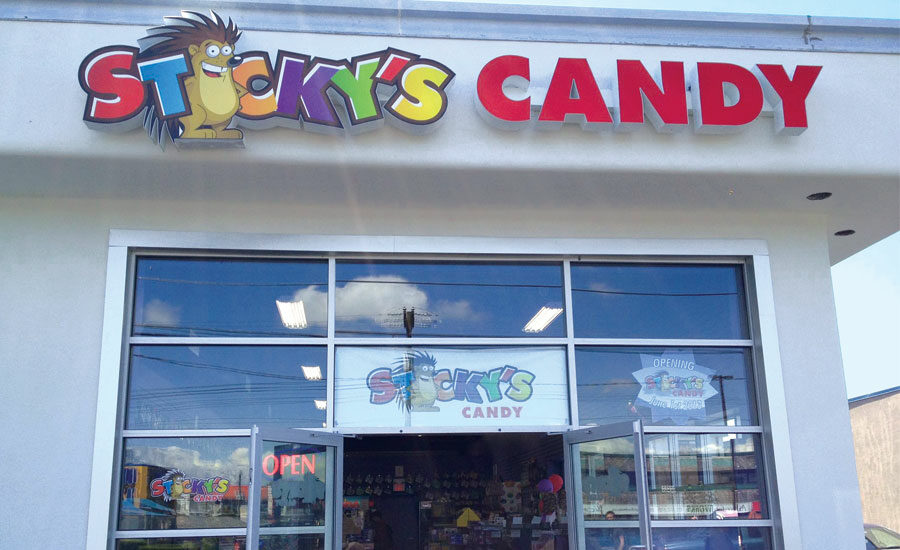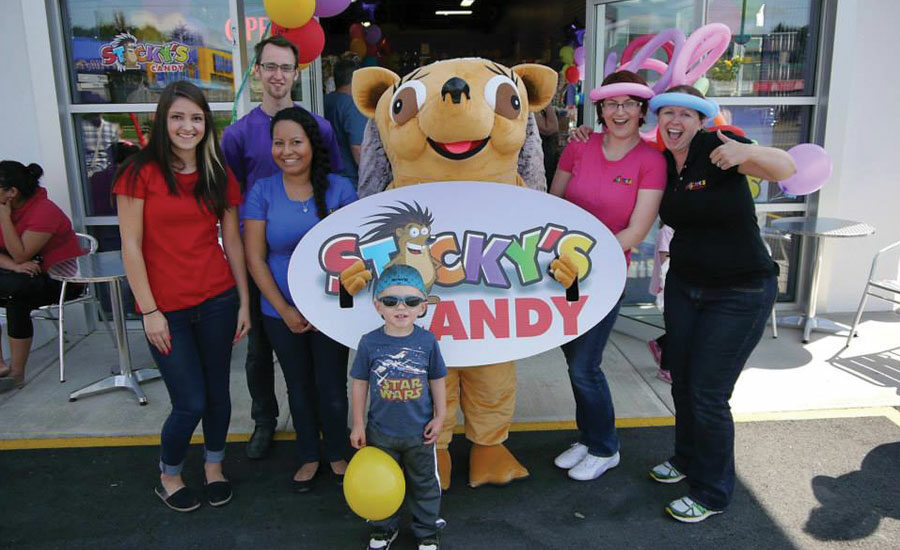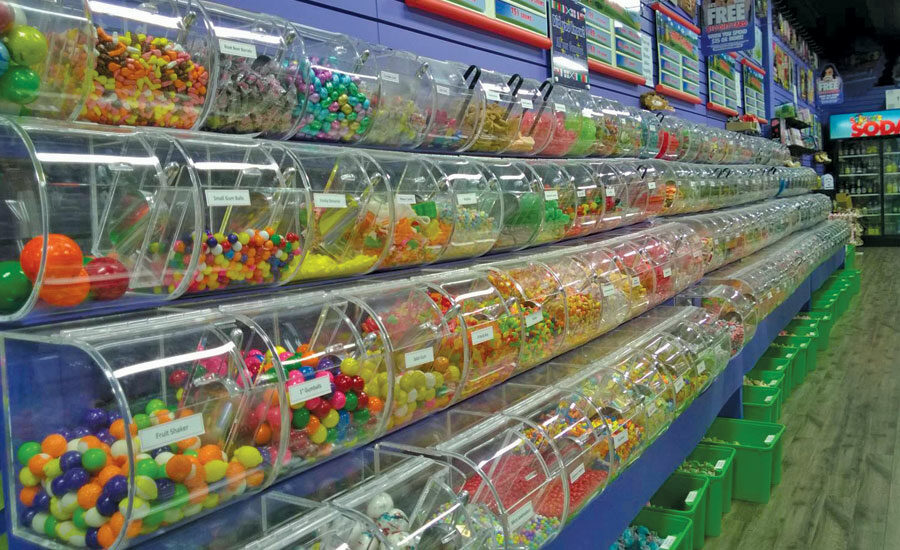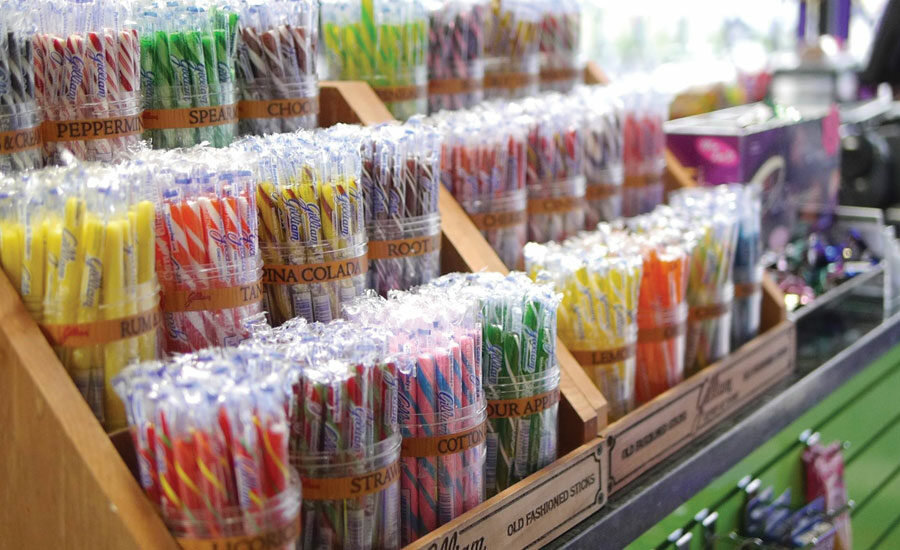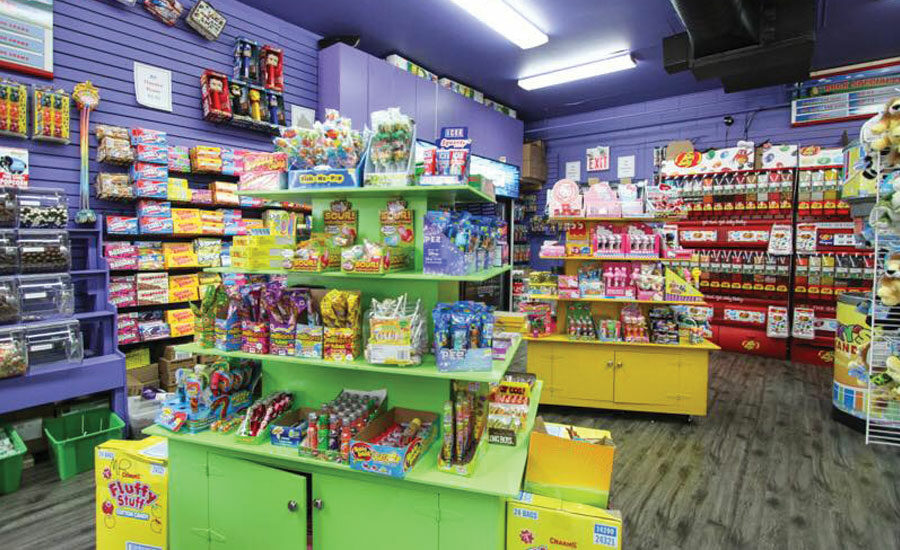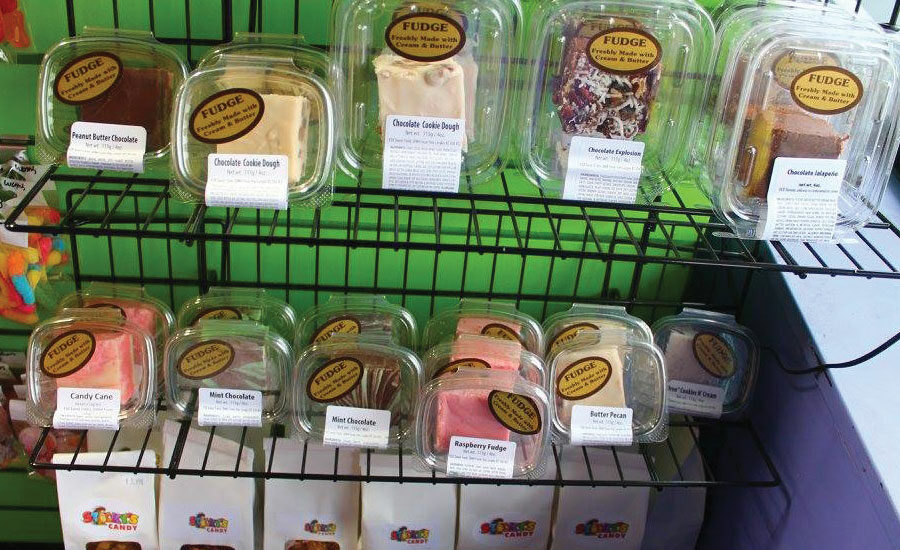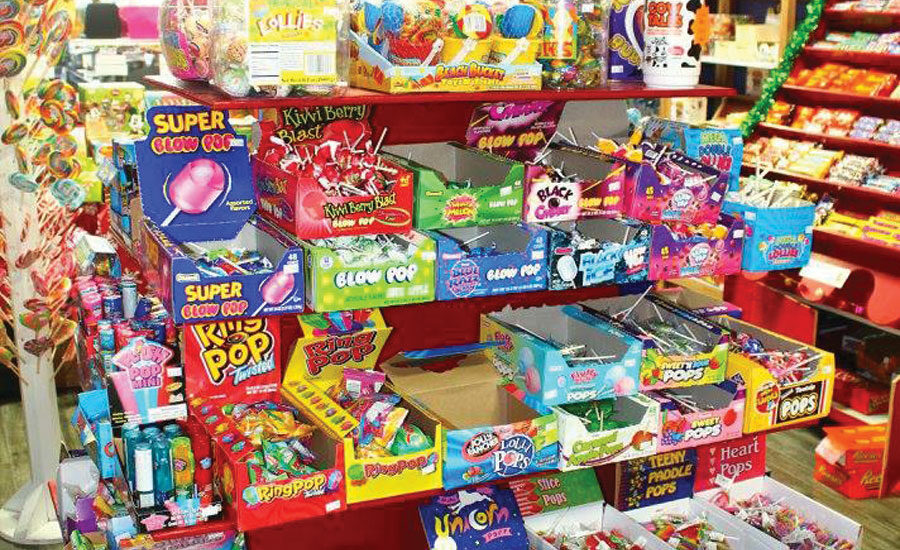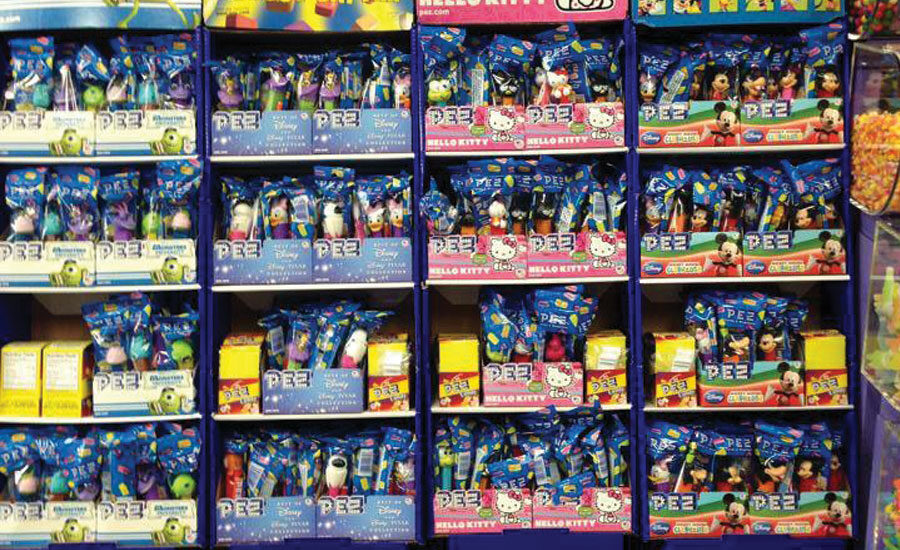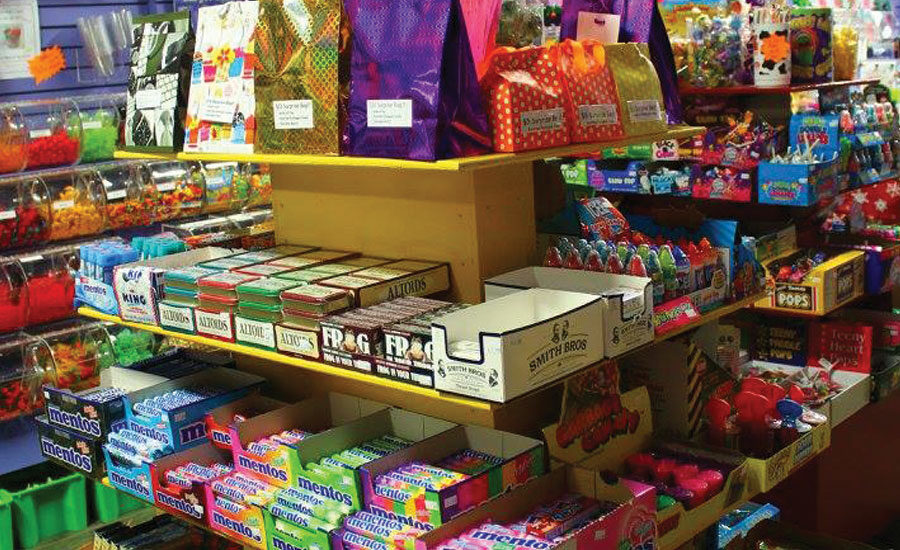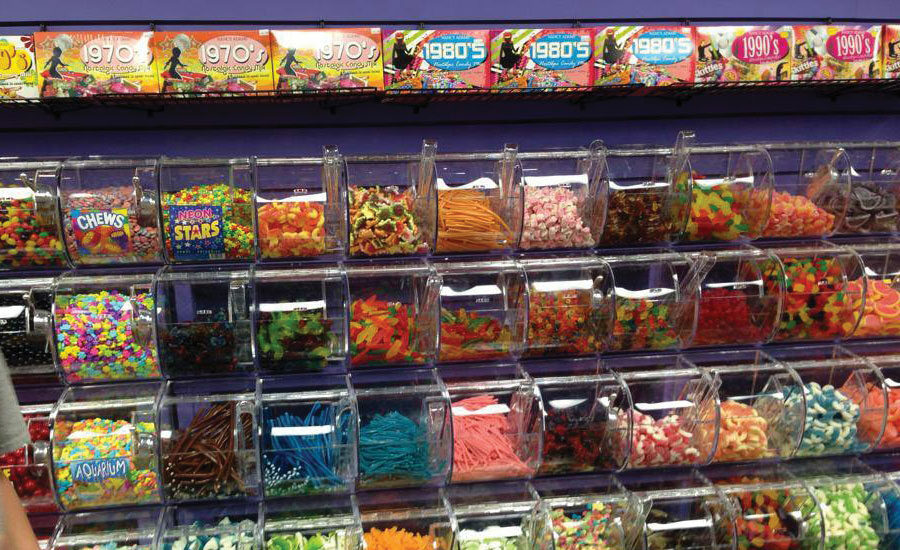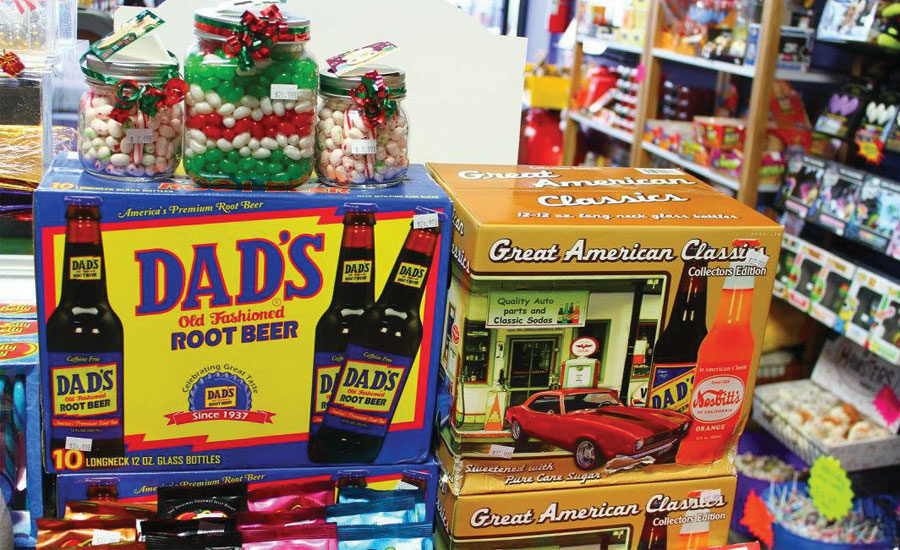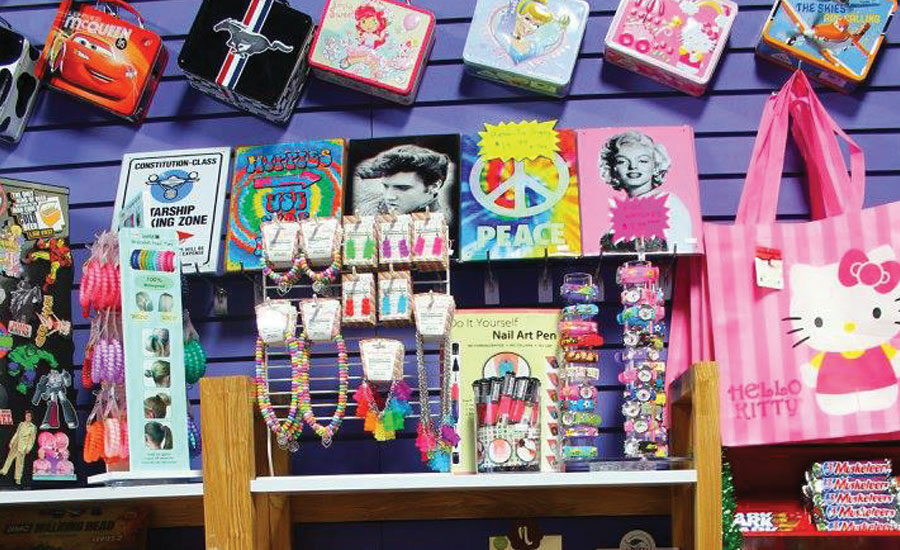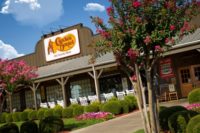Robin Burnette used to own a hardware store. But it wasn’t really for him.
“You’re always dealing with the kind of customer that comes in and they’re grumpy,” he says, recalling that most shoppers were frustrated with a home repair and looking for a solution. “You’re always helping them recover from a bad mood.”
The whole thing was just too much negative energy for Robin. So he decided to get out of hardware and into something a little happier — candy.
That was a little more than four years ago. And since then he’s founded Sticky’s Candy LTD, a confectionery chain in western Canada with 25 stores and growing.
At the time, Burnette said he didn’t feel like anyone was really doing candy stores to the level he wanted to do them in his area. So he took three weeks off from the hardware store, and did some research.
“I went through just about all my competitors’ stores. I wrote down what they were doing right, and what I thought they were doing wrong,” he says.
It was enough to convince him that he could pull it off. So he partnered with Frank Efremjan, and the two worked to come up with a name.
“We came up with a lot of names. My partner wanted to call it, ‘You suck it,’” he recalls laughing. “It was funny, but kind of a gray area. We don’t even sell candy underwear. We want it to be a family experience.”
They decided to go with Sticky’s because, “candy makes your fingers sticky.”
Efremjan has since scaled back his role, instead focusing on owning just one store. But that hasn’t slowed down Burnette, who has taken the concept of a single candy store to the next level. They now have franchise stores all over the Vancouver area, and new ones are in the planning stages.
The stores are designed to invoke nostalgia for the adults, and offer happiness to the kids. And Burnette prides himself on stocking, well everything amazing.
A tidbit on the company website describes their mission like this, “We take pleasure in fulfilling the sweet tooth of all our customers, from when you cut your first tooth till you lose your last! Quenching the thirst for the hard-to-get vanilla Coke, tantalizing the taste buds with our fresh hand-made fudge and satisfying sugar cravings is just another day at the office for Sticky’s Candy.”
And Burnette has a knack for knowing what products will tantalize the taste buds.
“I’m looking for unique stuff,” he explains. “Like when the Minions Tic Tacs came out, I was on it right away. I committed to pallets and all the franchisees were like, ‘Oh my gosh, you bought a lot,’ and now we don’t have any left. It was the right buy at the right time for the movie being released.”
He also works to stay connected to international trends.
“I go to the ISM show too, which gives me a good look at a lot of products that the United States doesn’t carry,” he says.
It also gives him an edge with his Canadian competitors.
“We have all the competitors that everybody else does in the States,” he says. “We have all the grocery stores, Walmart. They’re selling chocolate bars. [But] in Canada they sell all Canadian chocolate bars. A majority of Canadians go south in the winter time, so we carry a lot of U.S. chocolate bars. We’ve got that chocolate bar that you like from the States that you found, and we also bring in the British chocolate and a lot of Dutch licorice.”
The stores also feature a massive bulk selections — 280 items to be exact, 48 of which are Jelly Belly jelly beans. All of the bulk candies are sold at one of just two price points, making it easy for customers to mix and match.
Stocking all that candy takes commitment though. And, his buying power often surprises suppliers. Like at a recent ECRM event in Arizona, where he met with manufacturers.
“Spending the money that I spend, the suppliers, when I was leaving, they were jumping out of their chair and shaking my hand,” he recalls. “They didn’t expect me to spend so much money. And it’s not only for my franchisees, but for my customers. I want to make sure that they’re seeing all the new stuff coming out.”
Currently, 22 of the Sticky’s stores are run by 18 franchisees, while three are corporate owned. It’s a ratio he put a lot of thought into after managing staff at the hardware store.
“When I had my home hardware store, I had 12 employees, and if you get the right employees, it’s wonderful,” he says. “But having 25 stores with 25 managers? I didn’t want to babysit and have to manage 23 managers, instead of coaching and bringing franchisees to the right level.”
And it was that train of thought that led to the franchise model.
“I truly thought that for us to grow in the right way, we needed to have a franchisee in the community of the store. To be able to take part in the Chamber of Commerce and the Rotary Club. To help make their business develop,” Burnette says. “If it’s corporate, they don’t have a vested interest in the store.
The strategy seems to be working. And he continues to hone it.
“The (franchisees) have to buy into the community, the dedication they have to give. It’s a full-time job,” he says. “It’s not something a mom can do two nights a week. It’s a full-time job and it’s a lot of work. But candy is very profitable, and if you do the work, you are rewarded for it.”
Even with commitment at the top though, Sticky’s still has to get its name out there. Burnette says they rely heavily on social media for marketing. But they also use old school advertising like running ads on busses as well as radio spots.
“We spend a lot of money doing billboard advertising. And we’ve got busses all around Vancouver completely covered with Sticky’s candy ads,” he says.
As for locations, Burnette says there was definitely a learning curve.
“We have learned so much as we’re growing. We have stores doing four times the amount of the starting stores,” he says. “You have to have a good customer base. We really want to make sure that we’re keying on locations that have daily needs, where people are actually coming in and moving around.”
In fact, one of their best stores is right outside a theater, and another is just outside a Walmart.
“Walmart does their job, and we do ours,” Burnette explains. “Everybody is going into Walmart, and right in front of them is our logo. So being scared of having them there is something you shouldn’t be. And you can share.”
Being flexible in location does mean that not all of the Sticky’s stores are the same size. While the biggest store is 2,000 sq. ft., the smallest location is just 550 sq. ft.
Indeed one of the most profitable locations is just 600 sq. ft. And it was designed that way because it’s in an expensive real estate area in west Vancouver where the rents are almost twice what you could pay just four miles away.
“So you have to realize what you can afford and what the long-term goal is,” Burnette says. “And we get all our products into that 600 sq. ft.”
It’s that willingness to be flexible that’s no doubt helped Sticky’s grow. In 2015 alone they built seven new stores, and they’ve already got plans for more. And long term he’d like to reach 75 or 100 stores.
“The growth that we’ve experienced is wonderful. We’ve had our pains with it,” Burnette says. “But we want to be a mover and shaker in Canada and we’re very interested in the northwest area [of the U.S.] and Canada.”
Of course, Burnette isn’t the kind of guy who’s just going to be happy selling candy. So the stores also feature nostalgia memorabilia, like tin signs. And they’ve also expanded into toys, with four stores expected to be selling candy and toys by 2016.
One, which opened Jan. 1, is going to be the company’s biggest location, at 4,000 sq. ft.
It’s all part of Burnette’s plan to spread a little more happiness in the world.
“[The other day] my wife lost her keys to the mailbox, so we had a guy come up and drill out the lock. And he said, ‘Robin, I love your stores. They give you a chance to slow down and smell the roses.’”
Looks like his plan is working.
